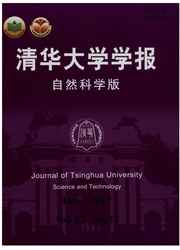

 中文摘要:
中文摘要:
由于环保法规的日益严格以及原油的重质化使得炼厂迫切需要降低新氢消耗,提纯回用可降低新氢消耗,但是提纯过程将增加能耗。为了权衡两者变化关系以确定系统最优提纯流量,该文根据概念法确定氢网络公用工程节省量和夹点随流量变化线,综合考虑变压吸附提纯的相关费用,做出节省新氢费用一流量线和提纯费用一流量线,通过图像分析法确定最优的提纯流量和临界提纯流量。应用此方法对某石化企业氢网络分析结果为:该系统的临界提纯流量为4.8mol/s,最优提纯量为60.74mol/s,最优提纯流量下,新氢节约量为29.03mol/s,提纯后可节约费用2.41×10^6US$/a。
 英文摘要:
英文摘要:
Increasing stringent environmental regulations and the increased processing of inferior crude oils require that refineries reduce fresh hydrogen consumption. This can be achieved by purification of the hydrogen. However, the energy consumption for purification must be considered in the system. The study balances both factors to determine the optimal purification feed flow rate (PFFR). The pinch concept is used to relate the hydrogen utility savings (HUS) and the purification feed flow rate. The cost versus PFFR diagram includes the pressure swing adsorption (PSA) cost with an HUS cost versus PFFR line and a purification cost versus PFFR line to identify the optimal PFFR and the limiting PFFR. The hydrogen network of a petrochemical enterprise is optimized using this method with the results showing that the limiting PFFR is 4.8 mol/s, the optimal PFFR is 60.74 mol/s , and the annual cost can be decreased by 2.41×10^6US$/a.
 同期刊论文项目
同期刊论文项目
 同项目期刊论文
同项目期刊论文
 期刊信息
期刊信息
